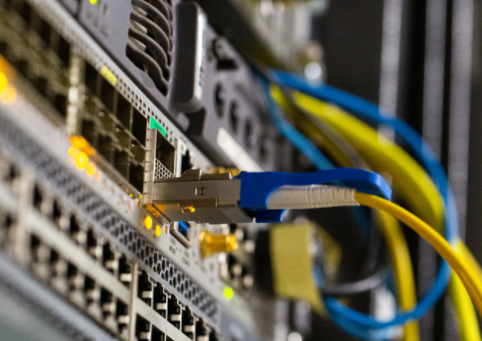Oufu Optical Fiber Cable Co.,Ltd
Address: Shenyang, Liaoning, China
Contact person: Manager Zhang
Phone: 400-964-1314
Mobile phone: +86 13904053308
【whatsapp && wechat】
2024-10-10 3642

Definition of Optical Transceivers
An optical transceiver is a combined device that integrates both a transmitter and a receiver. The transmitter section converts electrical signals (typically generated by digital electronic devices) into optical signals, which are then transmitted through optical fibers. Conversely, the receiver section converts incoming optical signals back into electrical signals, allowing them to be processed by electronic circuits. This dual functionality makes optical transceivers essential for enabling seamless communication between devices over optical fiber networks.www.adsscable.cn
Working Principles of Optical Transceivers
The working principles of optical transceivers revolve around the conversion of electrical and optical signals. Here's a breakdown of the key processes involved:
Electrical-to-Optical Conversion (Tx Side):
The electrical signal, representing digital data (e.g., a bit stream of 1s and 0s), is fed into the transmitter section.
A laser diode or LED (light-emitting diode) within the transmitter is modulated by the electrical signal. This modulation causes the laser or LED to emit light pulses that correspond to the binary data.
These light pulses are then coupled into an optical fiber, where they travel to the destination.
Optical-to-Electrical Conversion (Rx Side):
At the receiving end, the incoming light pulses are captured by a photodiode or similar optical detector.
The photodiode converts the light pulses back into electrical signals, which are then amplified and processed by electronic circuits.www.adsscable.cn
The processed electrical signals can then be interpreted as digital data by the receiving device.
Applications of Optical Transceivers
The versatility and efficiency of optical transceivers make them indispensable in a wide range of applications, including:
Telecommunications: Optical transceivers are critical components in long-distance communication networks, enabling the transmission of voice, video, and data signals over vast distances with minimal signal loss.
Data Centers: In data centers, optical transceivers facilitate high-speed interconnectivity between servers, storage systems, and networking equipment, ensuring optimal performance and scalability.
Cable Television (CATV): They are used in CATV systems for the distribution of television signals to subscribers, providing high-quality video and audio transmission.
Fiber-to-the-Home (FTTH): Optical transceivers play a vital role in FTTH deployments, enabling high-speed internet access and multimedia services directly to residential and business premises.
Aerospace and Defense: In aerospace and defense applications, optical transceivers are used for secure, high-bandwidth communication between aircraft, satellites, and ground stations.
In conclusion, optical transceivers are indispensable devices in modern telecommunications and networking. Their ability to convert electrical signals to optical signals and vice versa enables high-speed, long-distance data transmission, making them essential components in a wide range of applications. By understanding their definition, working principles, and applications, one can appreciate the critical role they play in facilitating seamless communication in today's interconnected world.